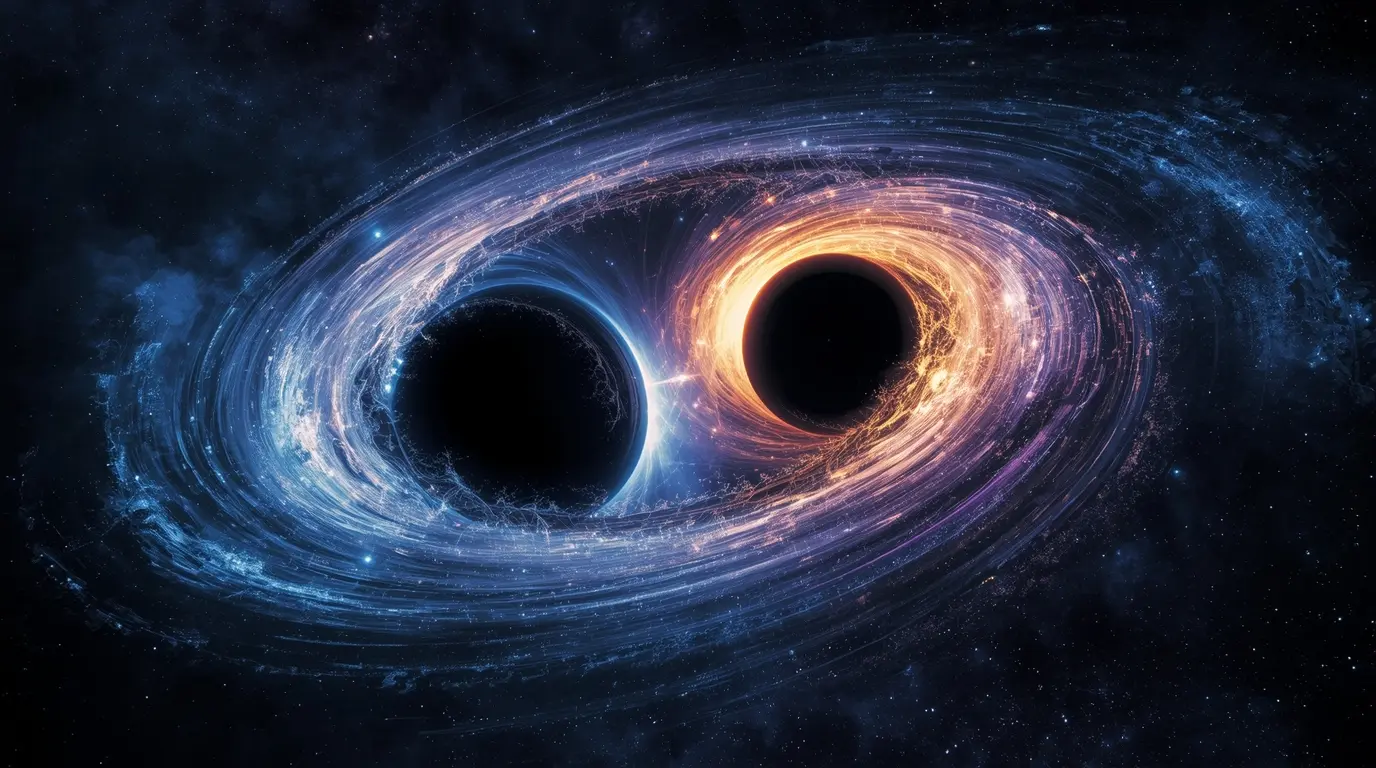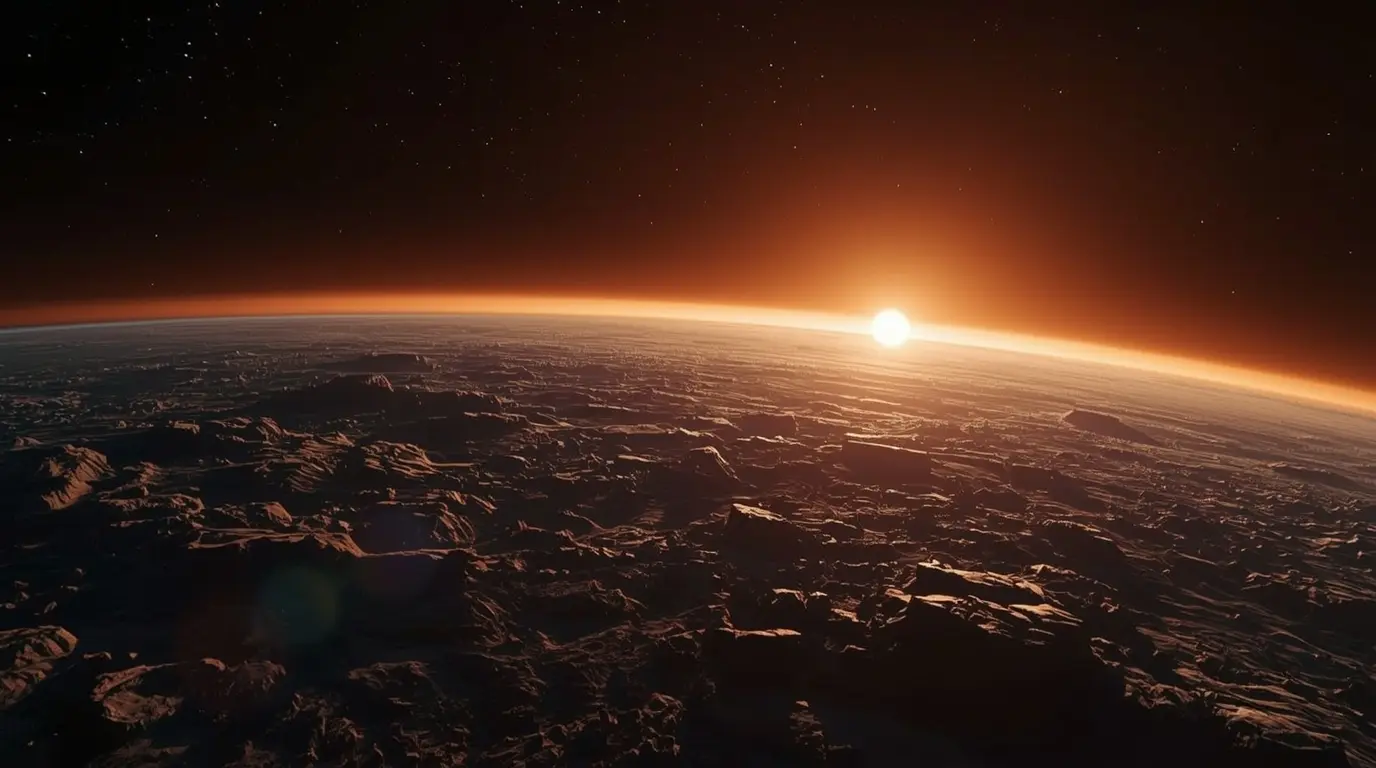Introduction: A Cosmic Chime Validates Genius
Astronomers have just pulled off a cosmic first: they’ve watched two black holes smash together in real time, and the data agrees exactly with the type of equations Albert Einstein and Stephen Hawking wrote down decades ago. These ripples, now called GW250114, came to us from LIGO in January 2025 like a cosmic “eureka” note. Because the data are so sharp, it feels like a deadline reminder from the universe: “Hey, quit guessing and start understanding.” The quality of the data is so high that it not only celebrates the genius of Einstein and Hawking, it encourages fresh ideas about the darkest corners of the cosmos.
The Detection: GW250114 and LIGO’s Precision
Imagine two black holes, both weighing 30—35 Suns, dancing in a perfect circle 1 billion light-years away. They collide, and one “new” black hole, about 63 Suns, is born, swinging like a cosmic top at 100 revolutions per second. LIGO’s next-gen gear—fancy new lasers and crystal-clear mirrors—caught the wave, measuring spacetime wobble to delicacy of the width of one ten-thousandth of a proton. That’s four times better than the LIGO team’s ten-year-old record. The upgrade isn’t just fancy tech; it’s a passport to a new level of cosmic detail.
This latest detection is proof that LIGO keeps getting better. Since it first caught a gravitational wave back in 2015, the global team has spotted more than 300 black-hole mergers, landing on a new event roughly every three days. The clarity of GW250114 let researchers dig deeper into the data than they ever could before, turning educated guesswork into hard-won truth.
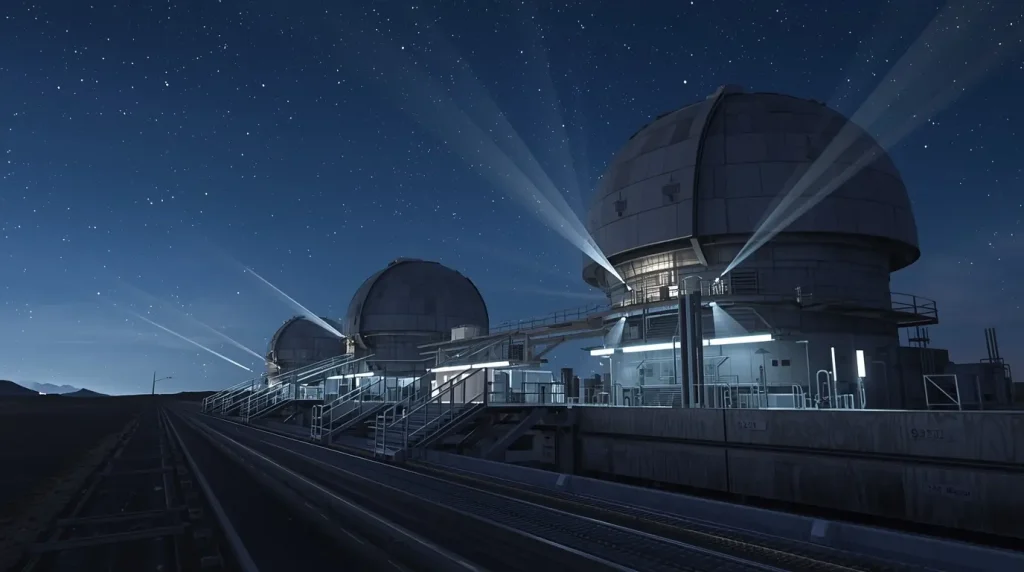
Einstein’s Legacy: The “No-Hair” Theorem
At the center of this find is support for the “no-hair” theorem, a key piece of Einstein’s general relativity. Penned by mathematician Roy Kerr in 1963, this idea says that black holes are surprisingly plain. They are defined by only two numbers: mass and spin. Compared to the wild variety of other stars, they are unembellished—once a black hole forms, no other details stick. All memory of its past collapses past the event horizon, never to return.
GW250114 gave scientists a clear audio fingerprint of a newborn black hole, one marked by a distinctive “ringing” like a bell. This ring revealed two notes: a basic frequency and a sharper overtone. Armed with these, the team quickly worked out the core attributes of the black hole—its mass and rate of rotation. Maximiliano Isi, the astrophysicist heading the LIGO-Virgo-KAGRA Collaboration, remarked, “We found two pieces of the ringing. That means the black hole is captured by just two numbers: mass and spin.” This beautiful neatness echoes Einstein’s early dreams of nature’s purest records—clean maps of warped spacetime.
Meanwhile, the 1971 area theorem of Stephen Hawking delivered another confirmation. According to this theorem, a black hole’s event horizon—the line where nothing, not even light, can escape—cannot shrink. In more poetic terms, the boundary area can only grow, mirroring the thermodynamics idea of rising disorder, or entropy. When telescopes recorded the latest event, the numbers showed that the horizon grew, not shrank. Both results combine to weave a stronger confirmation of a universe that respects strict cosmic rules, captured with stunning precision.
When scientists looked carefully at GW250114, they found that the two black holes that merged covered about 240,000 km² when they first collided—roughly the size of Oregon. After the smash-up, the resulting black hole stretched out to about 400,000 km², or the area of California. The surface area went up, fitting neatly with Hawking’s area theorem at a confidence level of 95 percent. If the area had dropped, it would call Einstein’s relativity into question or imply that the objects weren’t true black holes but something even stranger.
Stephen Hawking had passionately hoped to see this kind of test. After LIGO’s first gravitational wave event in 2015, he reached out to Kip Thorne, the Nobel laureate and co-founder of LIGO, to check whether the area theorem could be confirmed. Hawking died in 2018, but this event now cements his lasting imprint on theoretical physics.
What follows is even more far-reaching. These observations help scientists stitch together general relativity with quantum mechanics, two theories that resist being unified. At first, Hawking’s area theorem seemed to contradict quantum ideas, because it allowed black holes to avoid emitting radiation. Hawking later fixed the conflict by proposing a quantum process in which black holes give off Hawking radiation and gradually shrink over time.
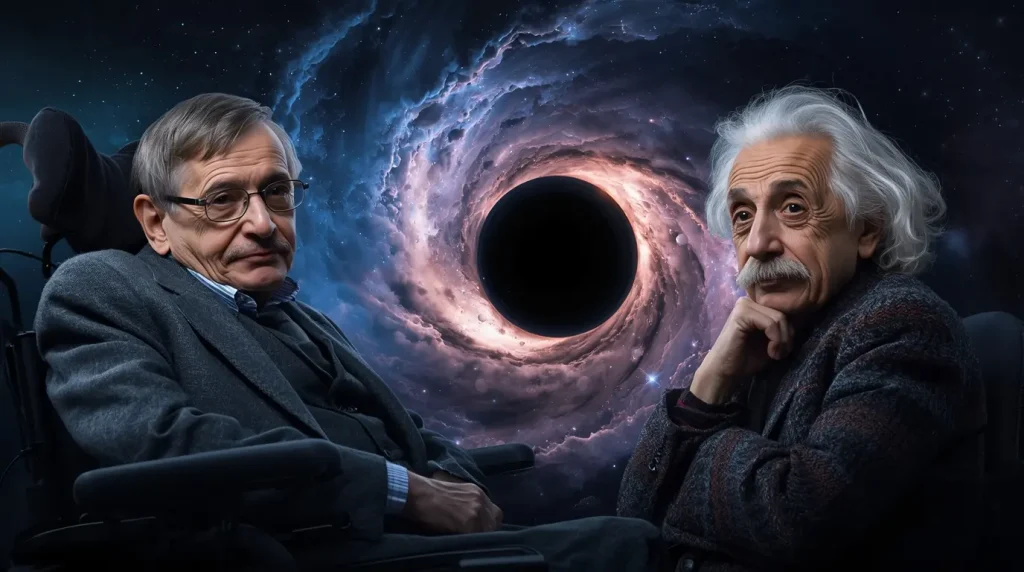
GW250114’s observations lend fresh weight to the view that black holes function like thermodynamic systems by radiating energy and storing entropy. This connection helps unite Einstein’s broad theory of gravity and the super-small realm of quantum mechanics, edging us closer to that long-pursued theory of everything. David Reitze, executive director of LIGO, succinctly framed the link: “There’s a deep connection between black holes and thermodynamics.”
LIGO’s Future: Upgrades and Challenges
The observatory’s ongoing success depends on relentless progress. This year, LIGO will start a multi-year upgrade designed to increase sensitivity by 25%, allowing the observatory to pick up more distant signals and perform sharper validation tests. Yet proposed budget cuts hang like storm clouds—one recent White House budget blueprint suggests closing one of LIGO’s U.S. observatories, a loss that would severely undermine the entire field of gravitational wave science.
The broader scientific community has rallied to defend LIGO’s promise. “If you compile a list of LIGO’s most impactful breakthroughs, this one ranks near the top,” Reitze commented. “It’s a decisive measurement of black hole behavior, and we have barely scratched the surface.”
Conclusion: A New Era of Black Hole Astronomy
GW250114 is not just another data point; it stands as a lighthouse guiding tomorrow’s cosmic cartographers. Each newly spotted black hole collision stitches a tighter seam in the cosmic quilt, revealing how the most massive holes nuzzle together, merge, and re-architect the fabric of spacetime itself. Gabriela González, one of the leading voices in the field, summed it beautifully: “We are learning so much that sometimes I feel tempted to call this ‘black hole astronomy.’”
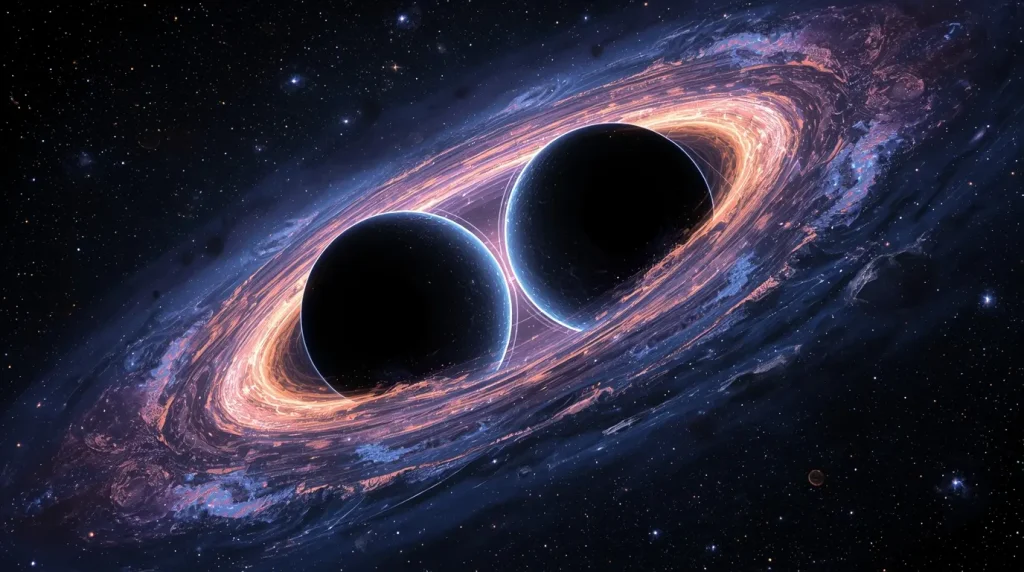
For the rest of humanity, this phenomenon is a reminder of our adventurous keenness, able to piece together the heavens one monochrome photograph of spacetime distortion at a time. Whether it starts with plaid notebooks of postulates, the haunting beauty of black hole thermodynamics, or the humming detectors coaxing out the outline of a wrinkle from a billion light-years, the story is the same: the cosmos is revealing its chapters, and we are merely the note-takers.
Source: https://edition.cnn.com/2025/09/11/science/black-hole-collision-einstein-hawking
For more incredible stories of everyday news, return to our homepage.

